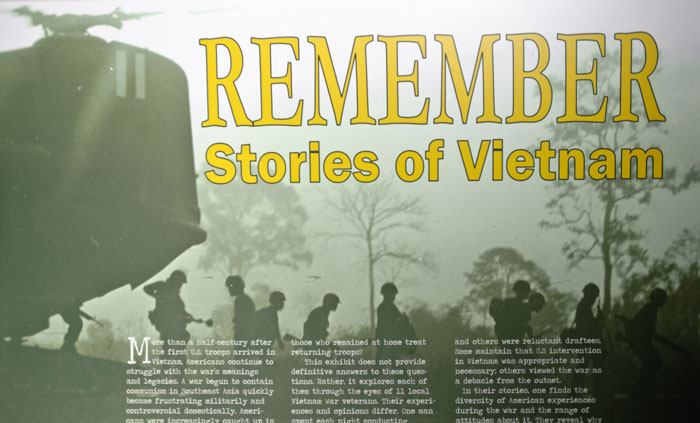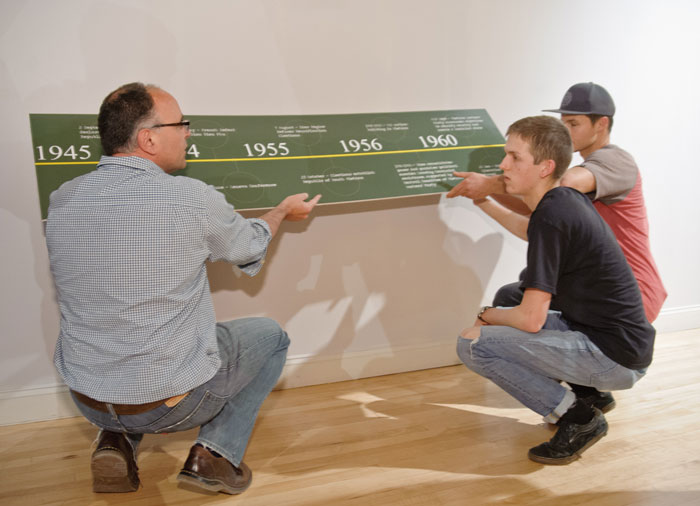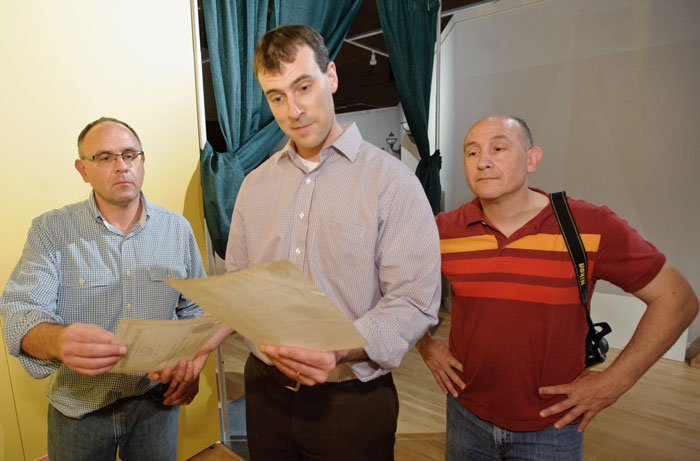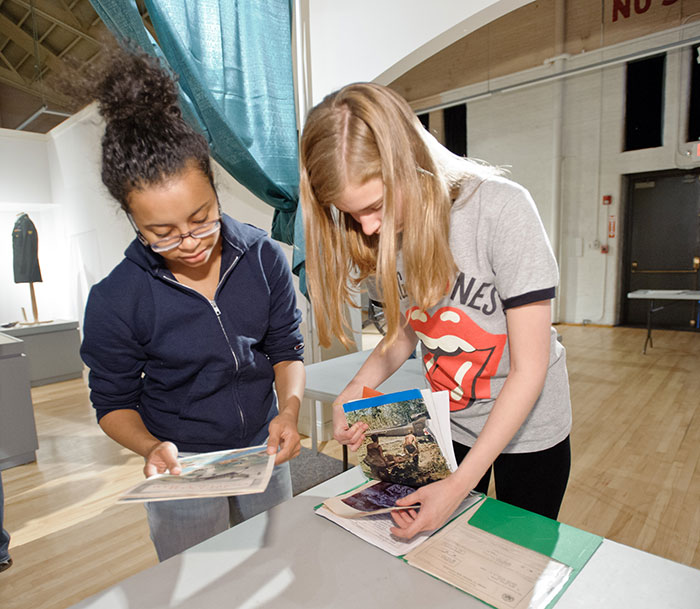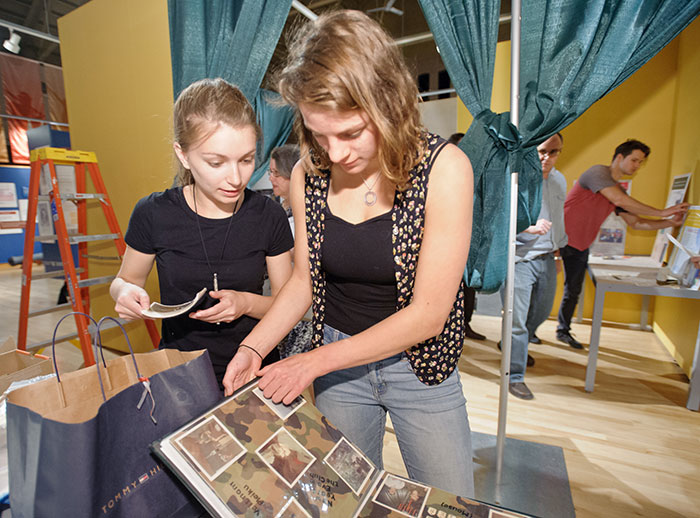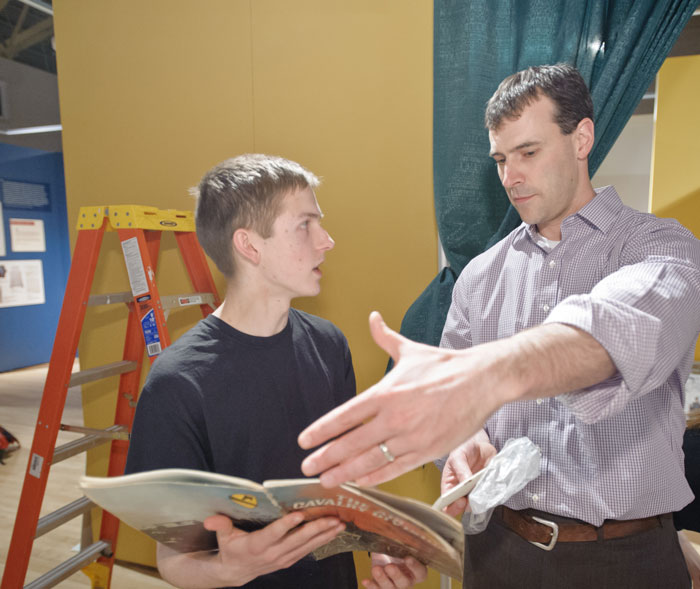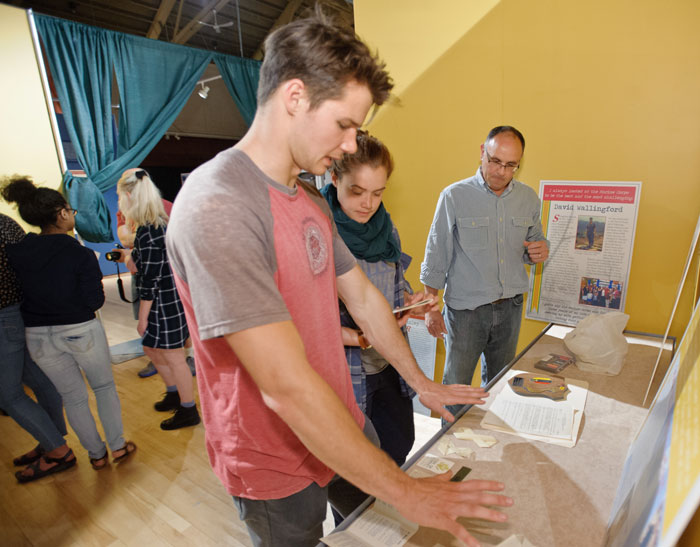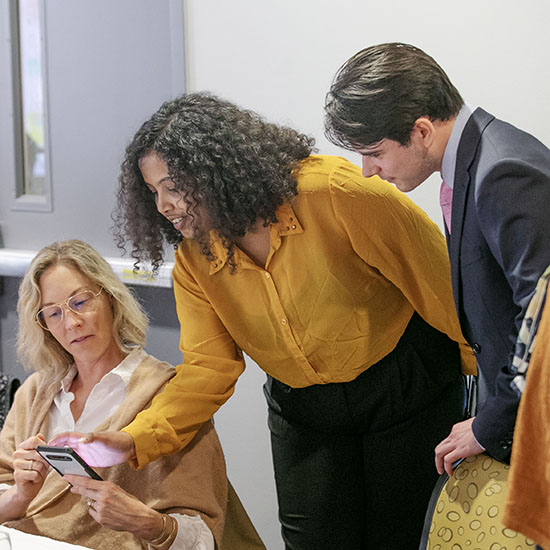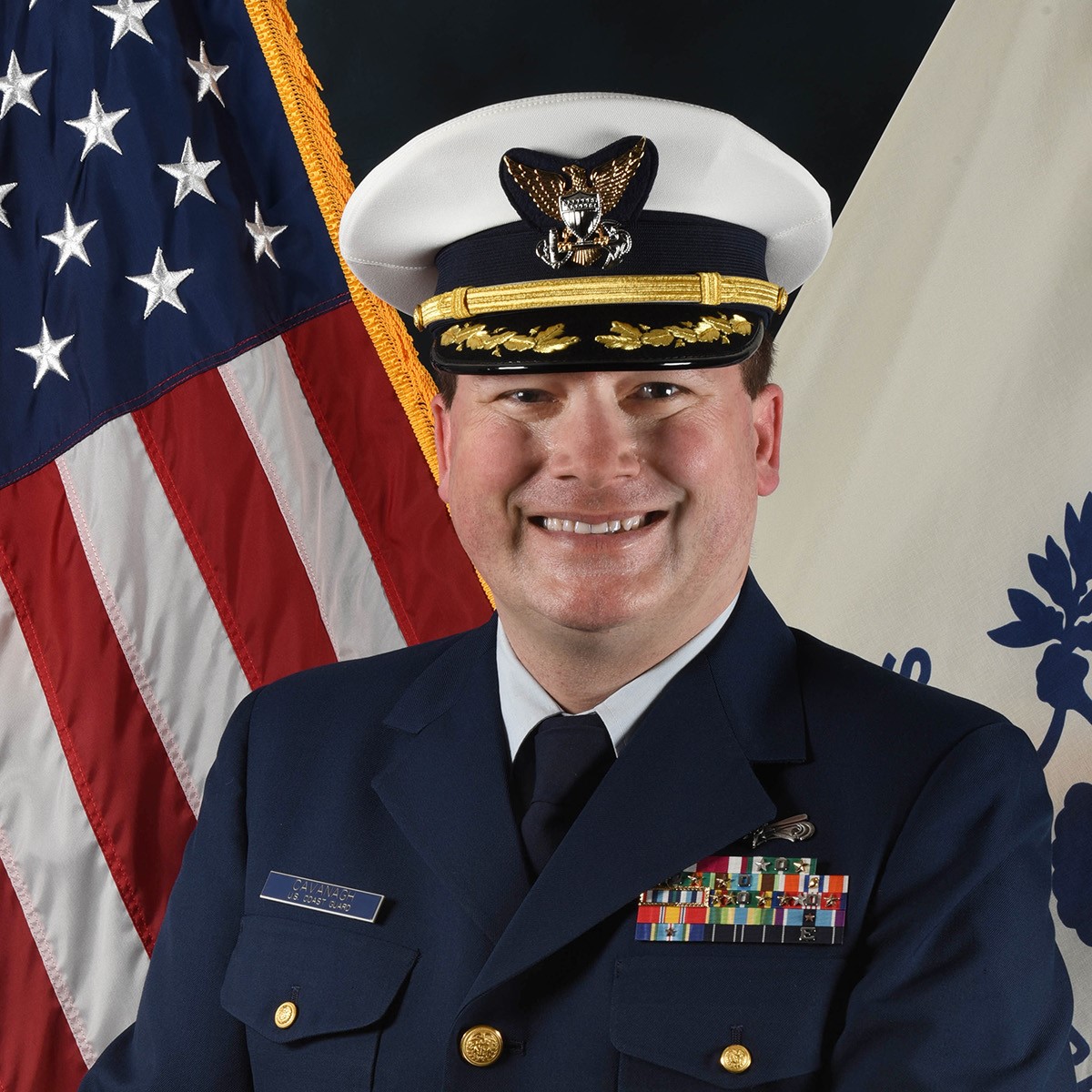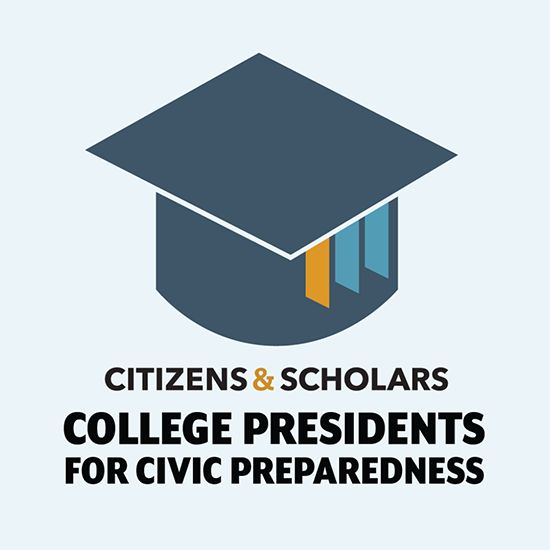History course on Vietnam helps students connect past with present
Between the “Greatest Generation” of World War II and Korean War veterans and the veterans of Iraq and Afghanistan are those who served during the Vietnam War years. Those veterans, some now in their 60s and 70s, served in a far different era, during a highly contentious conflict. This year marks the 50th anniversary of American involvement in that war, with a range of commemorative events and media retrospectives planned or underway.
David Kieran, visiting assistant professor of history, wanted the eight students in HIS 363: “The Vietnam War in American Memory” to consider how the history they learn in the classroom intersects with the community in which they live. He also wanted them to think about how and why a war that ended long before they were born remains a topic of continuing interest.
To achieve these goals he designed an ambitious course—similar in scope and workload, he said, to a graduate-school offering—with an unusual centerpiece. The students were assigned to complete oral histories based on interviews with local Vietnam-era veterans. At the outset, the goal was to showcase the histories in a public venue to be determined. In the end, serendipity enabled the students to meet with many local veterans and mount an exhibition at a prestigious location.
Said Kieran, “We want students in a liberal arts college to understand the connection between classroom learning and the world. The course asked them to think about such questions as how to talk about the war, how to represent the war and how the war engages with the community.”
Assignments included 12 required texts, weekly one-page papers and two analytical essays. The most critical task was the oral history, which included meeting and interviewing a veteran, transcribing the veteran’s remarks and returning them for the veteran to read and review, and obtaining artifacts and mementoes from the veteran for use in the exhibition.
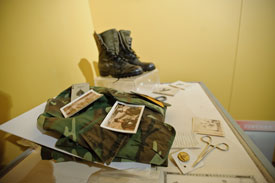
Vietnam artifacts prepared for exhibit.
Last December Kieran met with a local committee charged with developing a 50th anniversary observance and came away with five names of potential interviewees. Those contacts led to additional interview subjects. One veteran, having read in a local newspaper about Kieran’s attendance at the anniversary planning session, reached out to him to volunteer for an oral history. In the end, 11 veterans—10 men and one woman—were interviewed.
Not all of the veterans were involved in combat. Helene Wallingford was a Navy nurse in Japan. Lew Benton was with the 25th Mobile Army Surgical Hospital. Some veterans enlisted; several were drafted. Some were against the war but served anyway. The variety of experiences and people emphasized a key point for Kieran: “The Vietnam War is an abstract concept for the most part. Talking to veterans brings the war from abstract to concrete. Students must grapple with the war in different ways when they listen to vets tell their stories.”
One class session was devoted to brainstorming questions to ensure that key topics were covered in each interview.
It did not escape notice that the veterans were talking about a time in their lives when they were very close in age to the students. Elliot Caron-Vera ’18 reflected, “After John Sacca (a veteran) gave us his artifacts, I looked at a photo that he gave me of a friend of his, who was a helicopter door gunner. I realized that he looked my age. It was really weird. All of his stories were from this time of his life. It’s hard to take into account the historical readings when you’re hearing about someone’s life.”
Summer Fitzpatrick-Keith ’17 and Alexis Traussi ’17 teamed up to talk to three veterans. Fitzpatrick-Keith said, “It was challenging at first, especially to manage the conversation and to be a good listener. We got better as our project evolved.” A common theme in all their interviews: “ignorance about adjusting after the war. There was ignorance about things like post-traumatic stress disorder, because it was not known until after Vietnam,” he said.
Traussi discovered, “The veterans were very nitpicky about the transcripts. This was an important process for us as students and historians, but for the veterans it was very important because it was their stories.”
All 11 veterans are featured in the students’ exhibition, which officially opened May 1 at the New York State Military Museum and Veterans Research Center on Lake Avenue in Saratoga Springs.
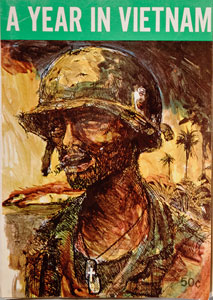
Book owned by one veteran.
Kieran called it “a unique opportunity for students to curate a professional exhibition,” for which he credited Courtney T. Burns, director of military history at the museum, and Col. Richard L. Goldenberg, a public affairs officer with the New York Army National Guard. Said Kieran, “The museum, and Courtney in particular, has been a wonderful partner in this project. Courtney helped the students learn how to write for museums, which is a new skill. They also learned to structure and lay out an exhibition, which is different than any other final project.” The exhibition fulfills Kieran’s goal for students. “I’m committed to finding ways to engage students with the community and to use their work in impactful ways beyond the classroom.”
The class project came at a very opportune moment for the museum, according to Goldenberg. “The Department of Defense has designated us as a partner with the city of Saratoga Springs to bring commemoration of the Vietnam War to communities where veterans are from and returned to, to highlight and thank them for their service.” He added an important footnote from Vietnam veterans to those who followed. “As a group, when Vietnam veterans came home they said that never again would future generations of veterans return without the full thanks of the community.” The exhibition is one way to fulfill that promise.
This was the first time that Burns has collaborated with Skidmore students. He was the exhibition facilitator who served as advisor and sounding board. In a class visit he shared tips on how to write for an exhibition, and when the students gathered at the museum for the installation, he was helpful in deciding what to use and what to leave out.
The oral histories and the personal stories that derive from them are the focus. Burns said the important questions that the exhibition tries to answer are “How did they experience the war and how does it affect their lives?” He acknowledged that it was challenging to condense a process that normally takes several months into several weeks. He helped the students select themes and the general format. The students wrote synopses for each theme and selected quotes from the vets that are prominently featured on each storyboard.
The most difficult part? According to Burns, “It is a tight fit to include everything. It’s very personal for the students, so the question of what to include or leave behind is crucial. Everything is fascinating to the students because it is such a personal project.” He added, “Hopefully it will present a different story. There are radio operators and nurses who never saw combat but served during the war and it had an important effect on their lives."
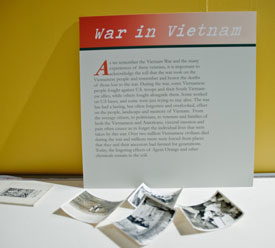
Another display case is readied.
That lifelong impact of having served, especially for those who saw combat, is indelible. Fitzpatrick-Keith said that the most surprising thing he learned was that for some of the veterans, “these were the best years of their lives. It is a common theme, because you are never aroused at the same level as you are in war. Everything is heightened even though it is terrifying.”
According to Kieran, the students’ efforts were “amazing and gratifying and impressive. They were eager to create a good project because of the audience and being entrusted with the veterans’ stories. It is a significant obligation and responsibility.” His hope is that they have discovered “there is no single Vietnam experience and no single set of views about what the war meant and continues to mean.”
Student feedback seems to confirm his assertion. Said Fitzpatrick-Keith, “This class opened my eyes to the complexity of Vietnam. It was sobering. I learned how heavily Vietnam has influenced American society, culture, and soldiers and the way we think about war.”
All photos by Eric Jenks ’08.
